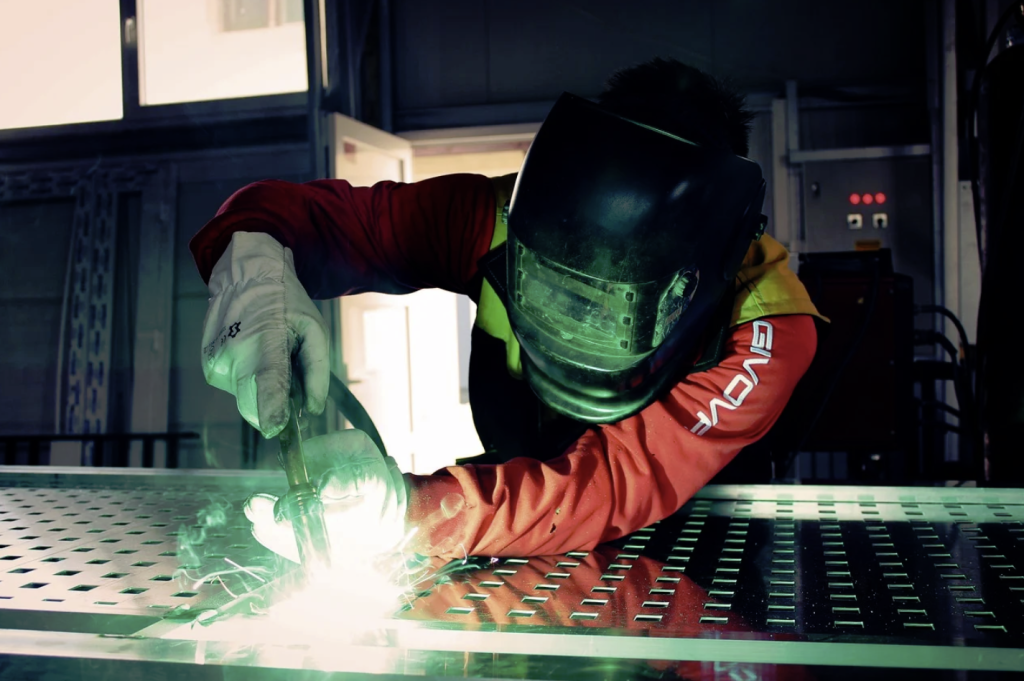Recycling is essential to making all sorts of industries more sustainable, and the manufacturing sector is no different.
In fact the impact of the recycling trend has been felt in more ways than you might imagine, especially in terms of the technology used by modern manufacturers.
Here’s an overview of the kinds of adaptations and innovations that manufacturing tech has made to respond to the demand for recycling worldwide.

Plastic processing is being prioritized
When it comes to environmental impact, plastic is one of the most problematic materials around, and so has received the majority of the attention from campaigners and consumers in recent years.
Part of this comes down to its ubiquity; it is used for products across every conceivable category, from electronics to drinks bottles and beyond.
To cope with the drive for the increased recycling of plastics, manufacturers are having to integrate all sorts of machinery which is not just aimed at pumping out parts made from new plastic materials, but also integrating recyclable plastics into the production line.
From gear that can sort and organize used plastics, to equipment capable of converting it into a form that can then be reshaped to create fresh products, all sorts of breakthroughs have been made in this sphere.
Likewise the manufacturing machinery market itself is becoming more circular and sustainable. Marketplaces where businesses can sell used plastic equipment to give it a second life elsewhere, rather than scrapping it when they upgrade to the latest and greatest replacement, are feeding into this trend.
Furthermore it is entirely normal for manufacturing machinery to be repurposed and improved through new augmentations in its own right. With so much money invested in equipment like this, it is in the interest of organizations to maintain it, update it and eventually sell it on.
Material wastage must be minimized
Another important point about manufacturing technology in a recycling-focused age is that the wastage that comes from all sorts of production processes is being reduced thanks to advancements in the equipment used.
Firstly, in the case that larger workpieces are machined into the desired shape of a component, the waste material which is created by this process can either be recycled on-site, or collected and shipped elsewhere to be repurposed in another context.
This applies whether in the case of metal workpieces, which when milled, cut or ground can easily have the waste recycled endlessly, or even when it comes to woods, plastics and ceramics.
Next, there are technological advances which reduce this waste in the first place. Laser cutters and high pressure water jets can interact with materials to minimize the amount of waste created and also reduce the chances of excess damage being done, since no direct contact is made between the tooling and the surface.
Even additive manufacturing, also known as 3D printing, has a part to play in making this industry more sustainable. 3D printed products use exact amounts of material, and also slash the carbon footprint of distribution by enabling components to be manufactured in the numbers needed all over the globe, rather than only in one location from which they must travel far and wide to reach the hands of consumers.
Energy efficiency & renewability are increasingly relevant
It is not just the machinery itself that has evolved in the wake of recycling going mainstream. Manufacturing has been given little choice but to contend with the energy costs associated with powering the heavy equipment this industry inevitably requires to function.
Energy efficiency at the level of individual machines is an interesting proposition. Improvements can be made by updating to equipment that is more efficient by design, but comes with the compromise of ousting existing kit and incurring the carbon costs this involves.
It is arguably better, then, to look at the kinds of energy sources that are harnessed by manufacturers. Renewable energy from natural sources like the wind and the sun, as well as those that involve reconstituted, recycled municipal waste and even the gas emitted from landfill sites, allow power to be provided in a way that does less damage to the environment.
Final considerations, challenges and opportunities
Recycling and the wider awareness among consumers that the old, wasteful ways of the past will not be possible to follow indefinitely have definitely caused manufacturing technology and the processes underpinning them to change course.
This has not been without its obstacles, and there is still a long way to go to make the economy truly circular. More communication, collaboration and education will be required to shore up humanity’s future in a world that still features mass production and the other trappings of modern society.
The good news is that progress has already been made, and this movement is gathering momentum with each passing day. We are learning to make things while remaining mindful of the effect this has on our planet.






